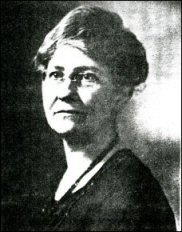|
 |
|
 |
Wednesday, April 27, 1949
In 1813 when the little school was started in Daniel Hoard's barn, there were 115 families, or perhaps a few more in the village and near-by outposts. There were probably of these, at least 25 children, as some families had several boys and girls in them. No doubt there had been some worrying and planning over this first school in Parishville town, as being New Englanders, an education was something not to be left out of the scheme of things. As to the qualifications of Miss Harriet Bronson, the first teacher, we know little. It is not likely that she had ever attended college or even a Normal college, as at that time neither was available to girls in an isolated and poor community such as this. She was capable, however, of teaching reading, spelling, writing and arithmetic in a simple way, sufficient for the needs of a community engaged in the arduous task of settling a new country. We are not to think that the parents of these children, about to begin their education amid such crude surroundings, were ignorant or uninformed. Think back to your own forebears and you will remember that they were highly educated to a certain extent. Al of them could read, write and "cypher." They were familiar with the current events transpiring in their country. They were familiar with the political situations at all times, and interested enough to go to the polls, which is more than some citizens will do now. They were thinkers and readers. I believe Elisha Risdon of Hopkinton was an example of the pioneers of St. Lawrence County. He was a man of intelligence, imagination and conscience. So we may presume that Miss Harriet Bronson was qualified to teach the R's to the first scholars of our town.
The Equipment
The equipment they had was of the crudest. Their desks were probably the smooth side of slabs fastened into crossed poles at both ends. It was not an uncommon occurrence to see a boy perched on top of a high stool adorned by a dunce cap on his head. Descending from the Puritan ancestors, the idea of stern discipline was still believed in, therefore the schoolmaster often wielded the birch rod upon his squirming scholars. Child psychology was for a long time to come, an unknown science to them. Misbehavior on the part of a boy or girl was simply the Old Adam within them working out, and they could best hasten his departure by good sound whacks upon the poor urchin's anatomy. The school children were no strangers to corporal punishment, as the parents meted out at home what they conceived to be a just sentence, upon culprits given them to be brought up "in the fear and admonition of the Lord."
School Books
There was little classification in that crude institution of learning. The youngest went to work learning their letters, no doubt, from "The Child's Pictorial First Book, or American Primer." At least that is the one my father and his brothers and sisters used. It is a century old and terribly shabby and dog-eared. The rest of their books were simple, if they had any at all. They read from the Bible a great deal. The old geography also used by my father and his brothers and sisters seems queer to us. It was in use in 1841, and how long before that I do not know. In 1830, the last census in the old book informs us that the population of the U. S. was 12,866,020. It is estimated that the census of 1950 will record 150,000,000 in round numbers. It is stated in my father's geography that the railroads already completed equaled 1500 miles and more under construction, making the U. S. the leading country in railroads. The pictures of the train of cars and a canal boat drawn by men on horseback on the shore are as funny as any "funny" of to-day. There were 87 colleges and 37 mentioned as Theological Seminaries. The different nations of the Earth were divided according to their "habits of life and state of improvement into savage, half-civilized and enlightened." The four prevailing religions of the world were "Christian, Mohammedan, Jewish, and Pagan or Heathen." There was a very good illustrated explanation of the seasons which a very young child could understand. Europe is discussed in two small pages, being summed up as follows: "Europe is the seat of arts and sciences. To her belongs the honor of discovering the most important truths; of producing the most useful inventions; the finest productions of genius; and the improvement of all the sciences. Germany has half a small page to itself. Italy and Greece are scantily noticed, which the people of England are described thus: "England is the most powerful nation on the globe . . . is distinguished for its vast and powerful navy and the intelligence, enterprise and activity of its inhabitants."
(To be continued)
|